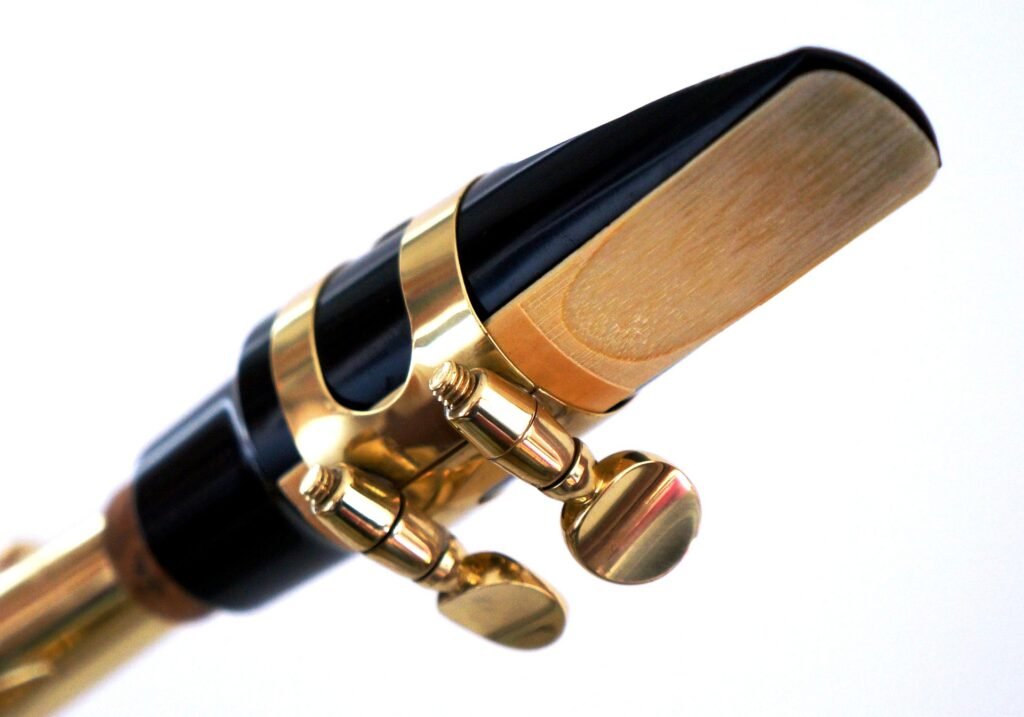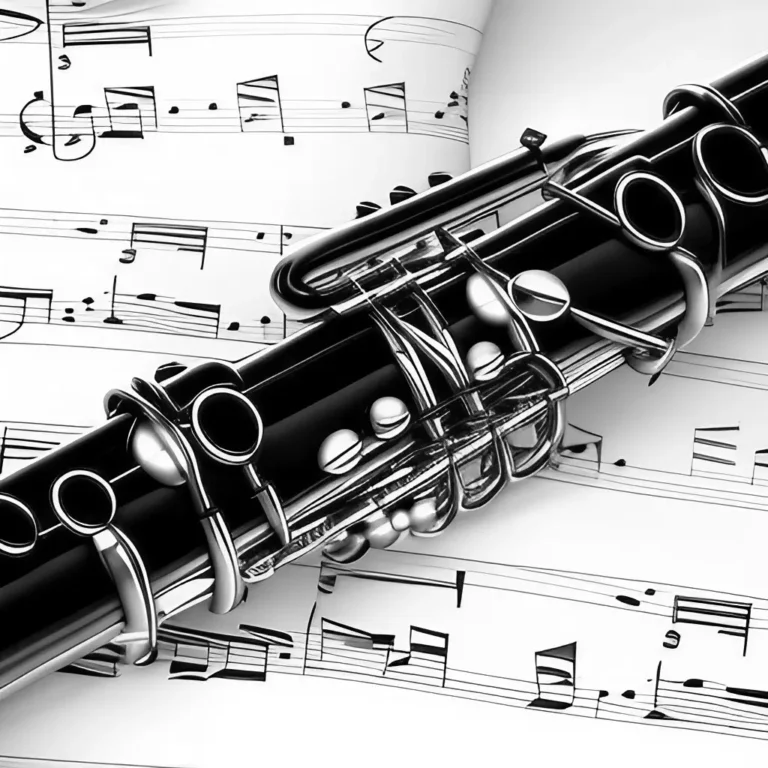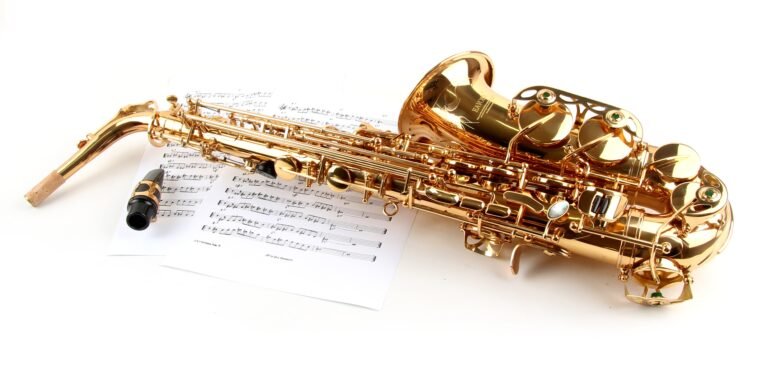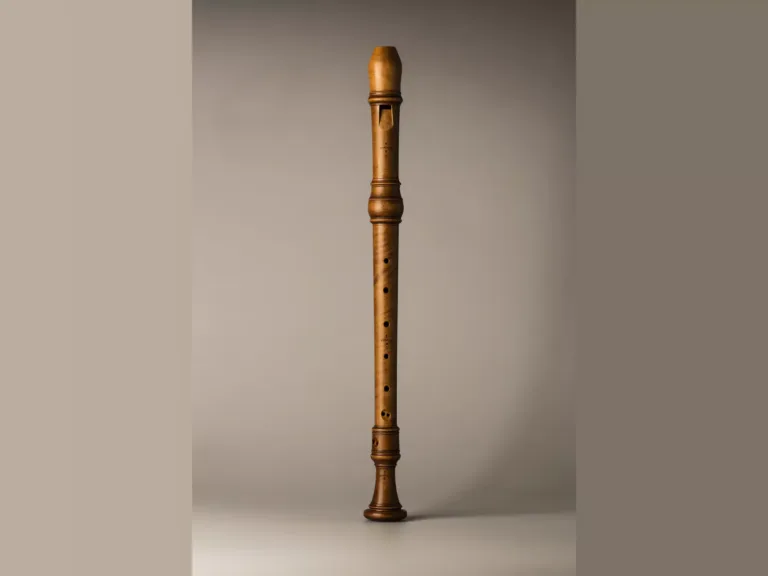
Are you in the market for a new saxophone mouthpiece, but feeling overwhelmed with all the options out there? Look no further! In this guide, we’ll walk you through everything you need to know to choose the perfect mouthpiece for your playing style.
First up, we’ll discuss versatile all-around mouthpieces. Then, we’ll dive deeper into the different factors to consider when choosing a mouthpiece, including material, size, and shape.
And if you’re still not sure where to start, don’t worry – we’ll provide tips on how to try out different mouthpieces and seek professional advice.
By the end of this guide “Choosing the Best Saxophone Mouthpiece”, you’ll be well on your way to finding the perfect saxophone mouthpiece for your playing style and taking your music to the next level.
What Sax Mouthpiece Do I Need? Versatile All-Rounders!
When it comes to choosing the best sax mouthpiece, versatility is key. A versatile mouthpiece allows for a range of playing styles, whether you’re into jazz, classical music, or anything in between. With a versatile mouthpiece, you can achieve a warm, rich sound for ballads, while also being able to add more edge and power for brighter, more lively music. These mouthpieces also tend to have a middle-of-the-road tip opening, making them suitable for players of various skill levels. Whether you’re a beginner or a seasoned professional, a versatile saxophone mouthpiece is a great choice that will offer you flexibility and adaptability in your playing.
This makes them a great option for beginners who are still finding their sound, as well as more experienced players who want a reliable mouthpiece that can handle anything they throw at it. So if you want a sax mouthpiece that can do it all, consider investing in a versatile all-rounder.
Your Next Saxophone Mouthpiece – Everything You Need to Know
Choosing the right sax mouthpiece is a crucial decision that can greatly affect your playing experience. There are various factors to consider when making this selection. Firstly, you need to take into account the type of saxophone you play (soprano, alto, tenor, baritone), as distinct mouthpieces are designed for different sax types. Secondly, you should think about the type of music you want to play and the sound you want to achieve. This consideration will dictate the tip opening and facing curve that is best suited for you. Additionally, players often consider the material and brand of the mouthpiece, although these factors are somewhat subjective. Ultimately, it’s important to test out several options and find the mouthpiece that feels the most comfortable and produces the sound you desire.
Material, Size, and Shape
Choosing the perfect saxophone mouthpiece can be a daunting task, but fear not! By knowing what to look for in terms of material, size, and shape, you can find the ideal mouthpiece to suit your unique playing style. For starters, consider the type of sound you want to achieve. Certain materials, such as hard rubber or metal, can produce different tones. As for size, a larger mouthpiece can produce a louder sound, while a smaller one may be more comfortable for beginners. Lastly, take a close look at the shape of the mouthpiece. An oval shape may be better for jazz players, while a more cylindrical shape is often preferred by classical saxophonists. Keep these tips in mind, and you’ll be well on your way to finding the perfect mouthpiece for your playing needs.
As a saxophonist, your sound is your identity. Additionally, trying out different mouthpieces is an absolute must. Each saxophone player has unique preferences and needs when it comes to mouthpieces, making the selection process highly personal. So, don’t be afraid to experiment and test out different options until you find the perfect match. After all, your sound is worth the investment.
Whether you’re a classical player seeking a more refined sound or a modern player looking for a brighter, more robust tone, the right mouthpiece can make all the difference in your saxophone playing. For those leaning towards a classical style, consider mouthpieces with a smaller tip opening and a more focused sound. On the other hand, if you’re looking for a more modern sound, look for mouthpieces with a larger tip opening and a brighter tone. Remember, trying out distinct mouthpieces is key to finding the one that best suits both your playing style and musical preferences. The reed strength also play an important rule on the sound, and we will cover it in another blog.
| Materials | Saxophone mouthpieces are made from a variety of materials, including metal, hard rubber (ebonite), wood, various plastics, porcelain, crystal, and other materials. Metal is the most common material used for sax mouthpieces due to its durability and ability to produce a wide range of tones. Hard rubber is also popular as it provides a warm tone and can be easily shaped into different designs. Wood is another option that produces a mellow sound but can be difficult to work with. Plastic and porcelain are both relatively new materials that offer unique tonal qualities but may not be as durable as metal. No matter which material you choose for your saxophone mouthpiece, it’s important to consider how it will affect the overall sound of your instrument. Metal mouthpieces tend to produce brighter tones while hard rubber provides a warmer sound. Wood is great for producing mellow tones while plastic and porcelain can add unique tonal qualities to your playing. Ultimately, the best material for your saxophone mouthpiece will depend on your individual needs and preferences. |
| Size | Overall, saxophone mouthpiece chambers come in three main sizes: small, medium and large. Each size has its unique characteristics that can affect both volume and tone depending on your playing style. It’s important to do research and try out different sizes until you find one that suits your needs best. The size of the chamber inside the mouthpiece affects the sound it produces. A larger chamber will create a warmer, more mellow tone while a smaller chamber will produce a brighter sound. Additionally, the tip opening (the distance between the reed and the tip rail) can be adjusted to customize your sound even further. Larger chambers and tip openings are better suited for classical music, while smaller chambers and tip openings are more suitable for jazz music. Ultimately, finding the right size of the chamber is an essential step towards achieving your desired sound. |
| Shape | The most common shapes are round, oval, and square. Round mouthpieces provide a bright, focused sound that is ideal for jazz and classical music. Oval mouthpieces offer a mellower tone that works well for blues and rock music. Square mouthpieces produce the loudest sound of all three shapes, making them ideal for solo performances or when playing the saxophone with an ensemble. The reed also play an important rule on the sound, and we will cover it in another blog. |
How to Develop Good Embouchure for a Saxophone Mouthpiece
Having the right embouchure is essential for producing a good sound on the saxophone. It’s important to understand how your mouthpiece works and how it affects your sound. This article will provide you with tips on how to develop good embouchure for a sax mouthpiece.
The first step in developing good embouchure is understanding the anatomy of your saxophone mouthpiece. The most influential parts of a sax mouthpiece that affect sound are the tip opening, facing length, and baffle shape. The tip opening is the size of the hole at the end of the reed, which determines how much air passes through when you play. The facing length is the distance between the tip opening and where it meets the table or flat surface of the mouthpiece. Finally, the baffle shape affects how much resistance there is when playing and can influence tone quality.
Once you understand these components, you can start working on developing your embouchure. Start by placing your lips firmly around the mouthpiece without pressing too hard against it. Make sure that your top teeth are slightly overhanging your bottom lip so that they don’t touch or press against it when playing. You should also ensure that your jaw is relaxed and not clenched tightly shut as this can cause tension in other areas of your face which can lead to fatigue and poor sound production.
Next, focus on controlling airflow with your tongue and diaphragm. When playing, use your tongue to direct air into different parts of your mouthpiece while keeping a steady flow from your diaphragm. This will help create a consistent tone throughout all registers of notes played on the saxophone. Additionally, practice using different amounts of pressure with both lips when playing different notes as this can help create more dynamic sounds depending on what type of music you’re playing.
Finally, experiment with different reeds and mouthpieces until you find one that works best for you and produces a sound that fits with what you want to achieve musically. Different reeds have varying levels of hardness which can affect tone quality so try out several before settling on one that suits you best. Similarly, different types of mouthpieces offer different levels of resistance which also influences tone quality so make sure to test out multiple options before deciding which one works best for you!
Developing good embouchure takes time but following these tips will help get you started in finding what works best for producing great sounds on your saxophone!
Top 5 versatile mouthpiece options and their features.
When it comes to choosing a sax mouthpiece, there’s no one-size-fits-all option. Depending on your skill level and playing style, certain mouthpieces may work better for you than others. Versatile all-rounders are a popular choice for sax players looking for a mouthpiece that can handle a variety of genres and playing styles. These mouthpieces are designed to produce a balanced tone and response, making them a great choice for both classical and jazz musicians. However, if you want a mouthpiece that can provide a more specific tone or response, you might want to consider other options. Ultimately, the best sax mouthpiece for you will depend on your individual preferences and playing style.
You want a mouthpiece that can handle a range of genres and playing styles. That’s why we’ve scoured the market for the five best all-round sax mouthpieces:
Selmer
First up, the Selmer S80 C mouthpiece is a classic choice with a warm, rounded tone.
Vandoren
The Vandoren V16 offers a brighter, more focused sound that’s great for jazz.
Meyer
If you’re after something with a bit more edge, the Meyer 6MM mouthpieces are a popular option.
Otto Link
Alternatively, the Otto Link Super Tone Master provides a more traditional bluesy sound.
Yanagisawa
Finally, the Yanagisawa Metal mouthpiece is a versatile option that offers both power and subtlety.
Looking for Something Else?
For those looking to switch it up, we suggest trying out a mouthpiece with a different shape or material to find your perfect fit. Consider trying out a mouthpiece with a different cup depth, rim shape or throat size to see which options feel comfortable and produce the sound you’re seeking. There are also numerous mouthpiece comparison charts available online, as well as reviews from other musicians, to help guide your search. The more research you do, the better you will be able to make an informed decision that will enhance your playing. Happy hunting!
FAQ
What factors should I consider when choosing a saxophone mouthpiece?
When it comes to choosing a saxophone mouthpiece, there are a few factors to consider that can greatly impact your playing experience. The first thing to decide on is the material of the mouthpiece. Generally, brass and hard rubber are the most popular materials, but there are also options made from wood, crystal, and even plastic. Each material offers its own unique sound and response, so it’s important to try out a few different options to determine which one suits your playing style best. Another key factor to consider is the tip opening size, which affects the overall sound and ease of playability. Lastly, the baffle shape and chamber size can also have an impact on your playing experience. Ultimately, finding the perfect mouthpiece requires trial and error, so be sure to test out different options until you find the right fit for you.
How do I know if a mouthpiece is a right fit for me?
Try out different mouthpieces to see how they feel and sound. Comfort is just as important as sound quality when it comes to finding the right mouthpiece. Keep these factors in mind and with a little trial and error, you’ll find the perfect fit for you!
What are the differences between hard rubber and metal mouthpieces?
When it comes to choosing a mouthpiece for your woodwind instrument, you may be wondering about the differences possible materials. Hard rubber mouthpieces are known for their warm, mellow sound and are often favored by classical musicians. They offer a smooth, comfortable playing experience and are less likely to cause irritation or discomfort during prolonged use. On the other hand, metal mouthpieces are prized for their bright, powerful sound, making them a popular choice for jazz and rock musicians. They offer greater projection and volume but may require a bit of extra effort to play. Ultimately, the choice between hard rubber and metal comes down to personal preference and playing style. Whether you’re a beginner or a seasoned pro, experimenting with distinct mouthpieces can help you achieve the sound you’re looking for.
What is the difference between a tenor and an alto saxophone mouthpiece?
For those unfamiliar with saxophones, it may seem like all mouthpieces are created equal, but those who play the instrument know that each type of mouthpiece can greatly affect the player’s sound. One of the main distinctions between mouthpieces for tenor and alto saxophones is their size. A tenor mouthpiece is generally larger than an alto mouthpiece, allowing for a deeper and richer sound. On the other hand, an alto mouthpiece is smaller and produces a brighter and more focused sound. Saxophonists need to understand the differences between these mouthpieces so that they can choose the right one for their unique playing styles and preferences. Whether you’re a beginner or a seasoned pro, experimenting with different mouthpieces can be a fun way to explore the vast sonic possibilities of the saxophone.
What are some of the best saxophone mouthpieces on the market?
The saxophone is a beautiful instrument known for its unique sound, and finding the right mouthpiece can make all the difference in achieving the perfect tone. There are countless options available on the market, but some stand out as the best for different reasons. One popular choice is the Meyer 5M, favored by many jazz musicians for its bright and expressive sound. Another great option for a richer and more resonant tone is the Otto Link Super Tone Master, preferred by many blues and soul players. However, for those seeking a more classic and versatile sound, the Selmer S-80 C is a trusted choice. With so many great options to choose from, it ultimately comes down to individual preference and style.
How do I care for my saxophone mouthpiece?
Caring for your saxophone mouthpiece is essential for maintaining a beautiful sound and prolonging its lifespan. After each use, it is recommended to remove any moisture by wiping the inside and outside of the mouthpiece with a clean cloth. Avoid using water or chemicals, as this can damage the material. If the mouthpiece becomes clogged with debris or mold, soak it in a solution of warm water and mild dish soap for a few minutes before gently cleaning it with a soft-bristle brush. Remember to store your mouthpiece in a dry, cool place, and avoid leaving it in direct sunlight or extreme temperatures. With proper care and maintenance, your sax mouthpiece can continue to produce beautiful music for years to come.
What is a Ligature and How Does it Affect Your Saxophone Mouthpiece?
The saxophone ligature is an essential part of the mouthpiece that helps keep your reed secure on the mouthpiece. A ligature is essentially a metal or leather band that attaches to the neck of your mouthpiece and holds the reed in place. The material used for a ligature can affect tone quality as each type has its own unique attributes when it comes to resonance and vibration. Metal or steel ligatures are known for their bright tone whereas composite or leather bands produce a darker, thicker sound.
When selecting a ligature, it’s important to consider your playing style as well as what kind of sound you want to achieve. If you’re looking for easy response and maximum volume then metal or steel may be better suited to you, but if you want more warmth in your tone then composite or leather might be better choices for you. Additionally, remember that different types of reeds work differently with certain types of ligatures so make sure to try out several combinations until you find one that works best for you!
Summary: Choosing the Best Saxophone Mouthpiece
As we come to the end of this blog, let’s take a moment to review the key points that we’ve discussed. We’ve explored the different types of saxophone mouthpieces available in the market, including metal and plastic options. We also talked about the importance of paying attention to the mouthpiece’s size and shape, as these elements can significantly impact your sound production. Ultimately, choosing the right sax mouthpiece is crucial for maximizing your playing potential. Your mouthpiece selection must suit your individual playing style and skill level. So, take some time to research and experiment with different options to discover which one optimizes your sound and offers the best playing experience.




